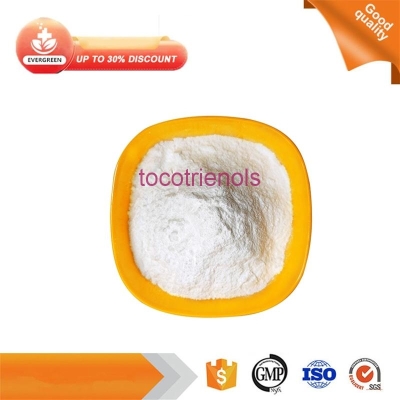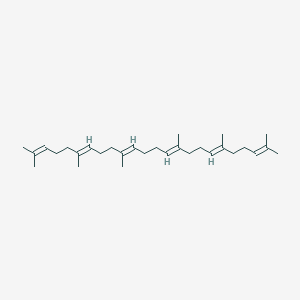For the first time, a target miRNA-degraded protein was found
-
Last Update: 2021-02-25
-
Source: Internet
-
Author: User
Search more information of high quality chemicals, good prices and reliable suppliers, visit
www.echemi.com
study found that miRNA degradation (TDMD) for targets requires ZSWIM8 Cullin-RING E3 ubibin connective enzymes.IntroductionmiRNA (miRNA) with Argonaute (AGO) proteins to guide extensive post-transcription gene suppression. Although binding to AGO usually protects miRNA from nucleases, extensive pairing with some unconventional target RNA can trigger miRNA degradation.On November 12, 2020, the David P. Bartel team published a research paper on Science Online entitled "The ZSWIM8 ubiquitin mediates target-directed microRNA degradation", which found that target miRNA degradation (TDMD) required ZSWIM8 Cullin-RING E3 pan-enzyme.This and other findings suggest and support the rationale model of TDMD, in which the hydrolyzing of the AGO target protein through the ubigan protein-protease pathway exposes the degradation of miRNA. In addition, functional loss studies have shown that ZSWIM8 Cullin-RING connective enzymes accelerate the degradation of multiple miRNAs in mammalian, fruit flies, and worm cells, thus determining the half-life of most short-lived miRNAs. These results shed light on the mechanisms of TDMD and extend its role in shaping miRNA levels in animals.Tiny RNA (miRNA) is paired with a bit in the mRNA to 22 nucleotides (nt) RNA, which causes these mRNA targets to degrade and/or translate more quickly. Overall, miRNA regulates most human mRNAs, and most of the 90 widely preserved miRNA families found in mammals are necessary for survival or normal development. Most miRNAs last much longer, usually longer than a day, and sometimes longer than a week, than mRNA, which usually decays after only a few hours. This stability can be explained by keeping each miRNA in the effect protein Argonaute (AGO), which interacts with miRNA throughout its length to protect it from nucleases.Although most miRNAs are stable, some miRNAs have a relatively short life span of between 2 < and 10 hours. The pairing between miRNA and abnormally highly complementary targets triggers the decay of miRNA, reversing the typical regulatory logic. This phenomenon, called target-oriented miRNA degradation (TDMD), is first expressed after the introduction of an antisanthial miRNA inhibitors or artificial targets with extensive pairings into cells, or after being infected with certain herpes viruses, which are expressed in transcripts with extensive pairing site points to guide host antiviral miRNA degradation.Recently, four cell transcripts were also found to trigger TDMD. For example, Cyrano long non-coding RNA (lncRNA) guides the effective degradation of miR-7 miRNA. After removing bits in Cyrano or mutant Cyrano that were widely paired with miR-7, steady-state miR-7 levels increased up to 50 times in some cells and tissues. Moreover, after the loss of Cyrano, the half-life of miR-7 increased, similar to most other miRNAs.In contrast to the widely paired bits that trigger TDMD, most miRNA regulatory bits are paired only with the miRNA seed region (2-8 nucleotides from the end of miRNA 5'). Some bits also have complementary pairings, but such pairings are less common (conservative only in 5% of priority conservative bits) and rarely close to the end of miRNA 3', which explains why most adjustment bits do not trigger TDMD. A better understanding of the TDMD mechanism will benefit from the identification of the proteins needed for this phenomenon. Although TDMD was first described more than a decade ago, no such protein has been reported.The study found that miRNA degradation (TDMD) for targets required ZSWIM8 Cullin-RING E3 ubibin connective enzymes. This and other findings suggest and support the rationale model of TDMD, in which the hydrolyzing of the AGO target protein through the ubigan protein-protease pathway exposes the degradation of miRNA. In addition, functional loss studies have shown that ZSWIM8 Cullin-RING connective enzymes accelerate the degradation of multiple miRNAs in mammalian, fruit flies, and worm cells, thus determining the half-life of most short-lived miRNAs. These results shed light on the mechanisms of TDMD and extend its role in shaping miRNA levels in animals. (
iNature
): 1. The ZSWIM8 ubiquitin ligase mediates target-directed microRNA
This article is an English version of an article which is originally in the Chinese language on echemi.com and is provided for information purposes only.
This website makes no representation or warranty of any kind, either expressed or implied, as to the accuracy, completeness ownership or reliability of
the article or any translations thereof. If you have any concerns or complaints relating to the article, please send an email, providing a detailed
description of the concern or complaint, to
service@echemi.com. A staff member will contact you within 5 working days. Once verified, infringing content
will be removed immediately.







